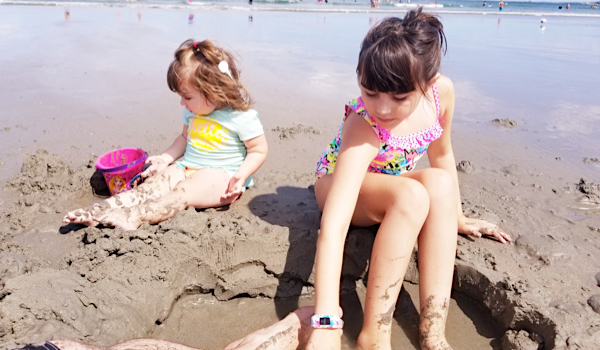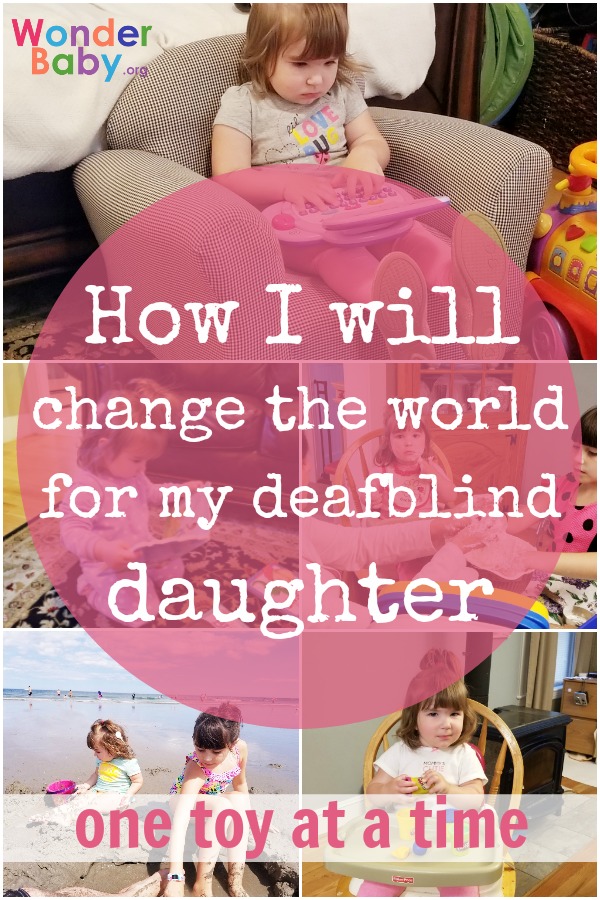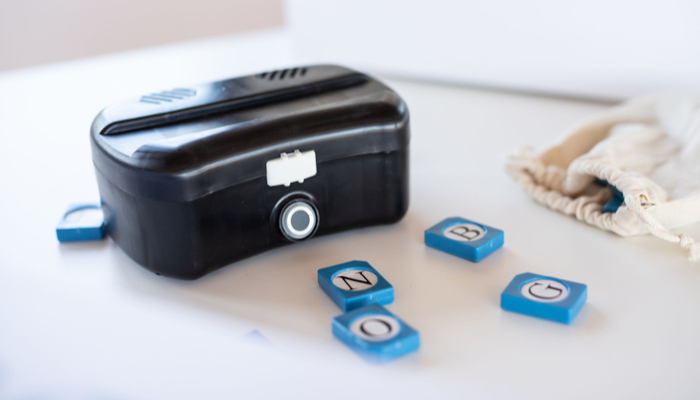How I will change the world for my deafblind daughter, one toy at a time

By Jacob Lacourse
I am the parent of a child with a disability and I am determined to adapt the world to her. In doing so I am hoping to help others along the way as well, by creating low cost solutions that promote accessibility.

Our Story
I am the father of two beautiful children, one of which has Usher syndrome, the leading cause of congenital deaf-blindness.
On January 20th 2016, our second daughter, Rebecca, was born. My wife Beth and I worked pretty hard trying to conceive her. After multiple rounds of in-vitro and one crushing miscarriage we were close to giving up and accepting the fact that we were meant to be a family of three. But we decided to give it one last shot and low and behold we were on our way to becoming a family of four, and our daughter Reagan would finally be a big sister!!
We were excited and prepared… or so we thought. It was now our second time through pregnancy and all the first-time parent jitters and concerns were a thing of the past. We would take the time we needed to get settled in and do the maternity and paternity leave thing and get right back to it.
But sometimes things don’t go as planned, do they? First she failed the newborn hearing screening. No big deal we thought, a technical malfunction happens all the time according to the nurses, and we would bring her to a specialist and they would tell us that Rebecca had fluid in her ears.
But that never happened. She failed the next round of testing and we were crushed. We were no longer on the path that we thought we were on.
After some tears and whole lot of Google searching as well as doctor visits, we pulled ourselves together and got to work. We quickly realized that this was Rebecca’s normal and that we were going to make sure that it became our normal as well. Being deaf was something that was new to us, but it was all she would ever know so we immersed ourselves in it as well, and we made it our normal.
Crushing blow number two hit in September of 2016 after Beth noticed the Rebecca had a difficult time holding her head up. I tried to convince Beth that it was nothing, but Mommy instincts kicked in and there was no stopping the determination to ensure that Rebecca was properly diagnosed. This is when we found out she had Usher Syndrome which would mean that her vision would also be affected, and by the time she was out of her teens, she could be completely blind. This was a much harder pill to swallow…
But again it was time to get to work and make sure that Rebecca had everything she needed, now and in the future. We decided at that moment that we were not going to allow Rebecca to live in isolation and have no access to things that the seeing community does, so we set out on a mission to adapt the world to her needs. You know the world certainly isn’t going to adapt itself!
So, I began tinkering and using my background in product development to create solutions that would be practical and low cost for parents of disabled children to afford.
And here we are today trying to figure out what that means, and to make it a reality. We have a fire in our bellies and an incredible passion to drive this philosophy forward: We will adapt the world to her needs and help others along the way.

Hello BecDot
We started our mission with a couple of open source projects that I was tinkering with from an internet connected smart puzzle to a smart lighting device to aid in illuminating dark hallways. That expanded into a number of follow on ideas including our latest, the BecDot device which is a low cost braille teaching toy for blind and visually impaired children.
I saw a need to provide accessible toys to children, especially toys designed with education in mind. The BecDot itself is an educational tool/toy that will be used to introduce braille at an early age to children who are visually impaired or who have been diagnosed with conditions that will eventually render them blind.
The device incorporates 4 braille cells that react to objects with preprogrammed NFC (near field communication) tags attached to them. The biggest challenge with the design was to create a device that was very low cost. I studied some of the Braille readers on the market and found that these devices are very complex and as a result make them very expensive for the consumer. This is why not many devices are designed for children and most of the focus is on the older Braille reader. I mean, who wants to give a 3 year old a $1000+ device?
After some trial and a lot of pain I came up with a design that could enable me to bring the device to market for under $100, enabling families, care givers and educators the ability to afford a much-needed accessible braille toy. You can learn more about the BecDot in the video below:
The Need
Being able to read is fundamentally important to a person’s ability to successfully navigate our world. The BecDot provides access to children with visual impairments and at a cost where it will not break the bank. It promotes and supports efforts to bring literacy to the forefront of education for blind and visually impaired children.
Teaching children early how to read is critical to their development and a visually impaired child is no different. Literacy is also crucial to employment and with unemployment at 70% among the blind population, it is important that this statistic be changed. We want to be that change. We want Rebecca to grow up knowing how to read and write. We want the world to be accessible to her. We want her to learn, strive and grow… and one day have a career and maybe a family of her own. It is so important to us that blind and visually impaired children have the tools they need to succeed. The unemployment rate of the blind and visually impaired needs to be drastically reduced, and we would love nothing more than to have even a small part in making that happen.

Related Posts

Eye Conditions and Syndromes, Visual Impairment
Neuralink Announces Plans to Restore Sight to the Blind with Brain Chip
Elon Musk’s company Neuralink has announced plans to begin human trials of its new “Blindsight” brain chip by the end of 2025.

Visual Impairment
The Gift of Understanding: How a Young Child Helps His Blind Father Navigate Life
When a parent is blind, it’s natural for people to wonder how their sighted child will adapt. Will they struggle to understand their parent’s needs? Will they feel burdened by...

Braille and Literacy
Making Braille Fun: Introducing Handi Exceller’s Innovative Learning Tools for Blind Students
Handi Exceller was born from a simple idea: learning braille should be both fun and accessible. The company creates interactive and gamified ways to teach braille.